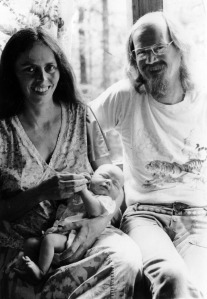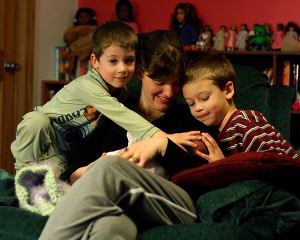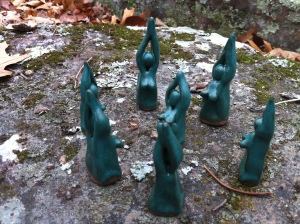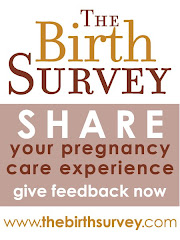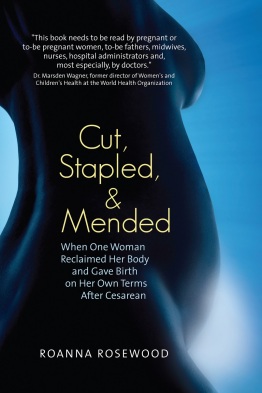 To be honest, I wasn't sure what to expect from Roanna Rosewood's memoir, Cut, Stapled, and Mended. After it arrived I actually wondered if I should
have agreed to review it, because I have so many things to read, things
to think about, and interests that are calling me---do I really need to
read a memoir about someone's cesareans? I've already read so many
books about birth, do I really want to read another one? Well...the
answer was YES, I did need to read it. After I finished the book, I felt
almost speechless at how deeply it had touched me. This book was a
surprise all the way through, from the opening Orgasmic Amazon Queen sex
scene, to a session with a psychic healer who tapped in to Roanna's
past life abdominal wound, to her dogged quest to open herself to her
own feminine wisdom, to her birth experiences---all soul-shattering in
their own way---this book touched me profoundly. I was shocked to find
myself with tears in my eyes at many different points and eventually
truly unable to put it down.
To be honest, I wasn't sure what to expect from Roanna Rosewood's memoir, Cut, Stapled, and Mended. After it arrived I actually wondered if I should
have agreed to review it, because I have so many things to read, things
to think about, and interests that are calling me---do I really need to
read a memoir about someone's cesareans? I've already read so many
books about birth, do I really want to read another one? Well...the
answer was YES, I did need to read it. After I finished the book, I felt
almost speechless at how deeply it had touched me. This book was a
surprise all the way through, from the opening Orgasmic Amazon Queen sex
scene, to a session with a psychic healer who tapped in to Roanna's
past life abdominal wound, to her dogged quest to open herself to her
own feminine wisdom, to her birth experiences---all soul-shattering in
their own way---this book touched me profoundly. I was shocked to find
myself with tears in my eyes at many different points and eventually
truly unable to put it down.Orgasmic Amazon Queen notwithstanding, Roanna comes across as a practical and down-to-earth narrator, who in her quest to understand herself, her body, her inner wisdom, and her birth experiences, makes a decidedly not down-to-earth personal journey through a variety of healing modalities and nontraditional experiences and perspectives. I really loved the balance she struck between the spiritual and metaphysical experiences she describes and the nitty-gritty reality of doing this thing, giving birth. In a perfect example of what I mean, she writes:
You think I would run out of poop but I don't. It's endless poop.
And, just a few pages later, the experience I already quoted in a prior post:
My ego, having (literally) had enough of this shit, quits. It gets up and walks right out the door. What is left of me poops in the tub. Looking down, I say, 'ewwwww.' I say it as if it wasn't me who just shat in the tub. I say it as if I just happened to come across poop in my bath one day. 'Ewwww' or not, I'm never getting out of the tub ever again. If this tub were full of nothing but shit mud, I would still stay right here (p. 144).
Only then does the Divine come, taking my body as her own. I am no longer alone. There is no fear…I experience completeness. I find religion. Infinity is tangible. Generations of children, their dreams, passions, defeats and glories—they all pass through me, converging here, between my thighs… (p. 146-147).
via Thesis Tidbits: Cut, Stapled, and Mended | Talk Birth
Despite planning homebirths, Roanna experiences two cesareans and her journey towards VBAC is an arduous one:
Deep inside, I feel the screams of birth echoing off the sides of my skull. Softer and softer they fade, becoming a faint whisper, then disappearing completely.
I open my mouth. 'Please,' I whisper-scream-beg-cry, 'please come back.'
She does not.
I am, once again, mortal. (p. 155)
While
I would likely proceed with some degree of caution if reading this
memoir as a pregnant first-time mom, there is much to be learned from
Roanna's experiences. Her narrative is rich, deep, compelling, scary,
dramatic, poignant, and powerful. I highly recommend it!
--
Disclosure: I received a complimentary copy of this book for review purposes. Crossposted at Talk Birth.



